|
|
Post by chefying on Jul 25, 2014 16:31:26 GMT
While I did not see any traces of Dian Cang Sect, my imagination went haywire and I sort of imagined these ladies some of the cooks for the Dian Cang Sect - or at least, caretakers or cleaners, etc..... 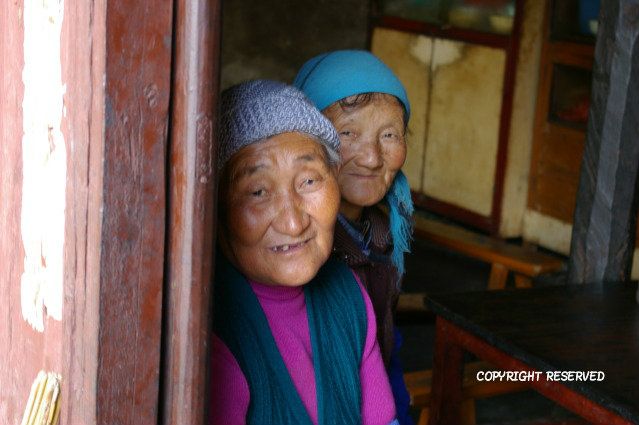 ... who help maintain tidiness of the Dian Cang sect walls and decorations such as these. 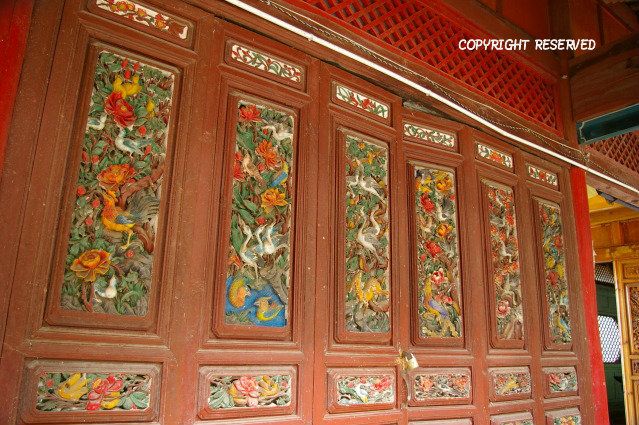 Meanwhile, I imagined this kettle had been used for tens of years to boil water for tea.... 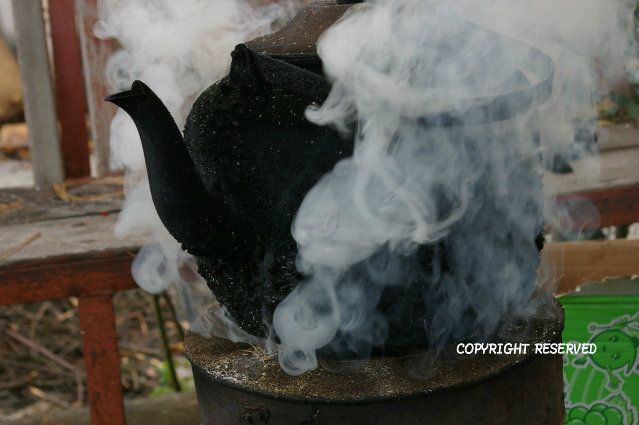 .... pretty much in squatting this manner - but dressed in ancient attire, of course. 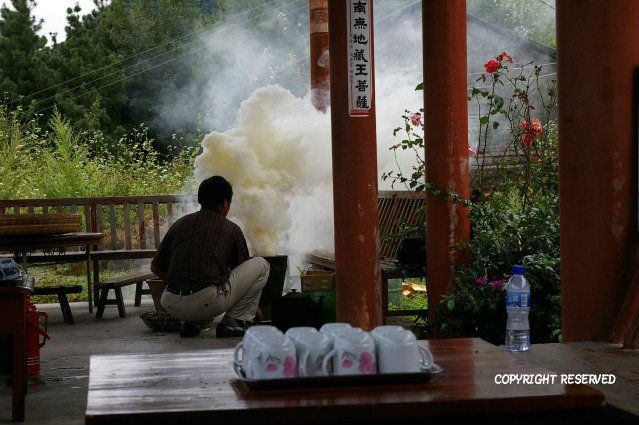 Yes, these photos were taken at the top of (Dian) Cang Shan. |
|
|
|
Post by chefying on Jul 25, 2014 16:38:47 GMT
In the Ancient City of LiJiang 漓江, Yunnan three is a pool called and the Black Dragon Pool. I seem to recall that in the Legend of the Condor Heroes, this was where Ying Gu lived, trying to master the complexities of the Eight Trigrams etc., so that she could go to Peach Blossom Island to rescue Zhou BoTong. This is the Black Dragon Pool in LiJiang, Yunnan. 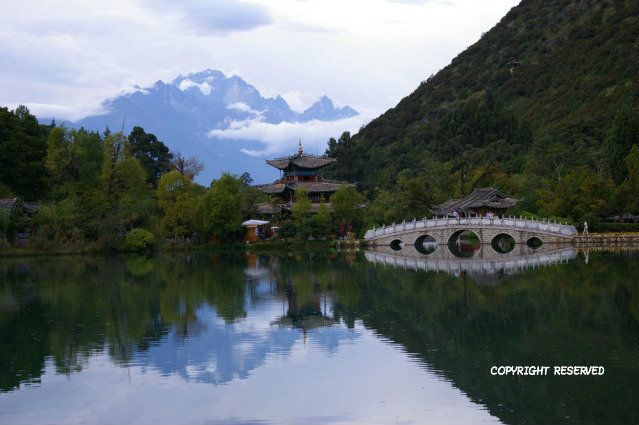 The mountain at the back is YuLong Shan, Jade Dragon Mountain. It is famous for its glacier, which is in the middle of this picture.  |
|
|
|
Post by Admin on Jul 26, 2014 15:25:50 GMT
What is Dian Cang Sect? What book?
|
|
|
|
Post by chefying on Jul 27, 2014 4:58:00 GMT
What is Dian Cang Sect? What book? Quoting from my cross reference in the Organisations in Wuxia books here"...Diancang Sect (點蒼派) appeared in only one book, Sword Stained with Royal Blood ...." by Jin Yong. siuyiu had also informed me in this post that in the story ping zong xia ying lu 萍踪侠影錄 there was mention of a Dian Cang Sect. I do not know how many Cang Shan's there are in China, I saw this Cang Shan in Yunnan and presumed it was the one and the same that inspired the Dian Cang Sect. My imagination can go wild sometimes! |
|
|
|
Post by chefying on Jul 30, 2014 13:45:09 GMT
|
|
|
|
Post by chefying on Jul 30, 2014 13:47:54 GMT
Come nightfall, the scene in Li Jiang Ancient City is even more surreal.... I half expected to see silhouettes of men dressed in black running along the ridges of the roofs. 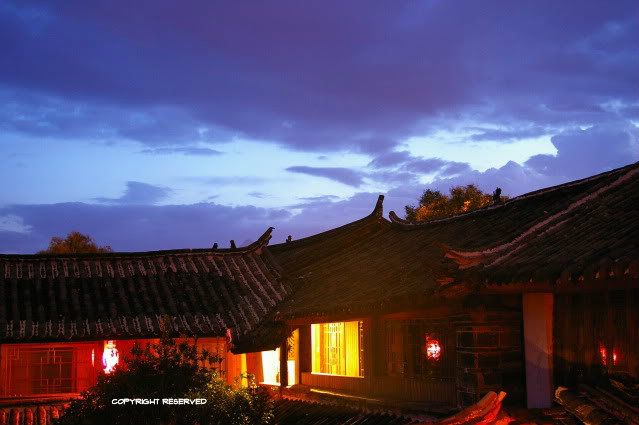 Truth be told, Li Jiang can be quite pretty at night, all lit up. 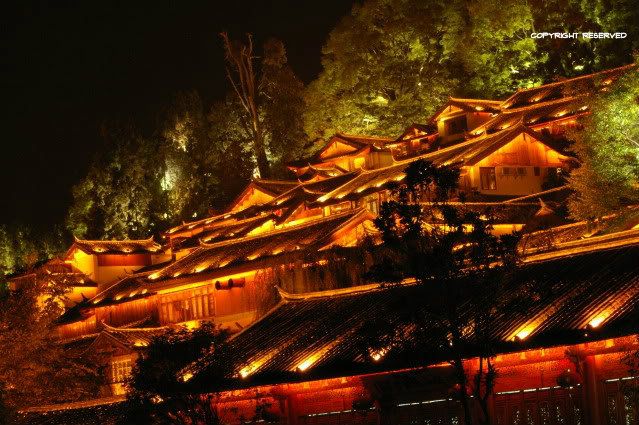 And come dawn, the inhabitants of Li Jiang go about starting their business as they did hundreds of years ago. 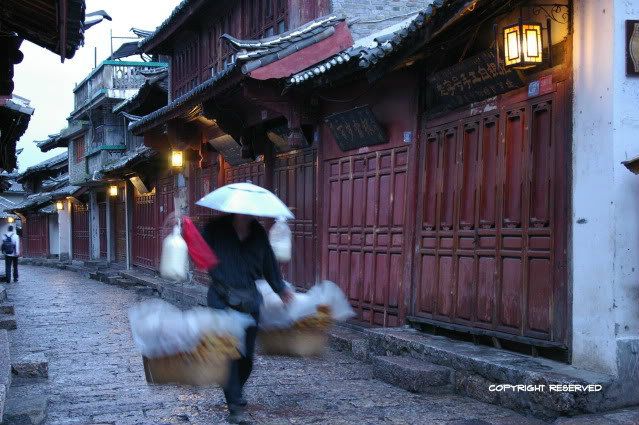 |
|
|
|
Post by chefying on Jul 30, 2014 13:51:54 GMT
In Lu Ding Ji - Duke of Deer Mountain, there was mention of people from the Mu Wang Fu. "Wang" in this case refers to Chieftain, and thus the phrase can be translated as the people from House of Chieftain Mu. Li Jiang was the stronghold of Chieftian Mu. I did not take a picture of Chieftain Mu's House in LiJiang, but this is a picture of the Chieftain's "Bie Yuan" - sort of like his resort, which is off LiJiang. 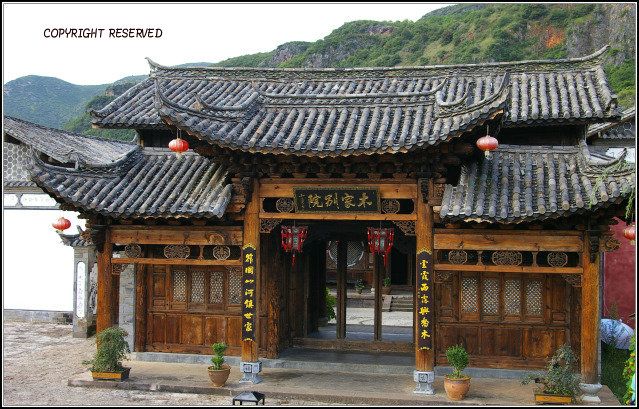 This is a close-up of the plaque proclaiming this 'resort'... 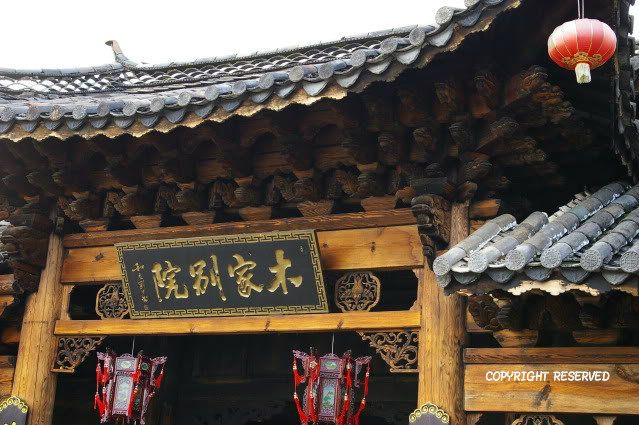 This is the main hall of the "bie yuan"/resort.... 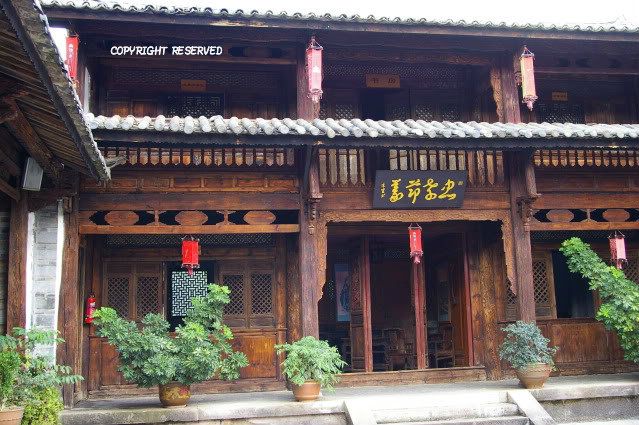 ...which does have some nice carvings.  |
|
|
|
Post by chefying on Aug 2, 2014 5:54:41 GMT
The area surrounding the Mu Family Resort is quite pleasant indeed. I found this Lotus Pond rather calming. It must be beautiful when the Lotus flowers are in season. 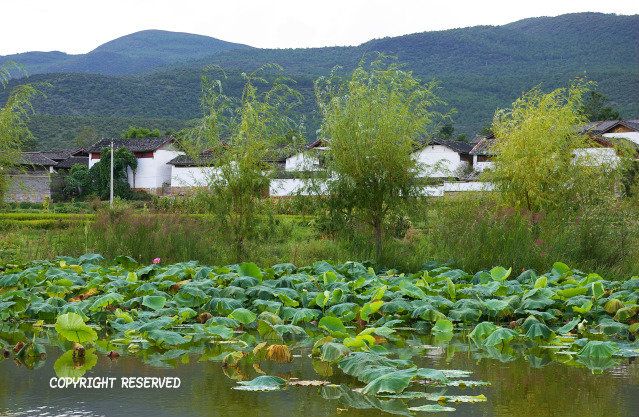 Another picture of the surrounding area. 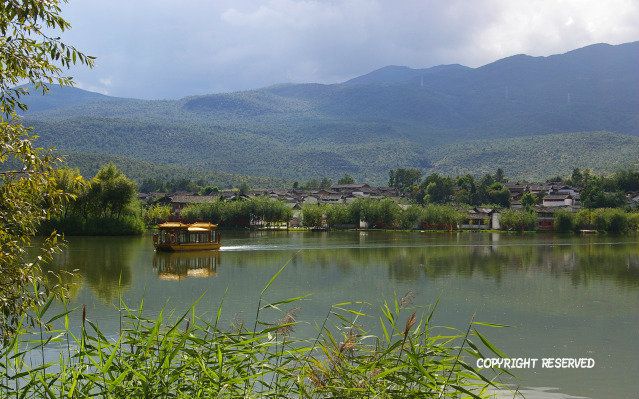 |
|
|
|
Post by chefying on Aug 2, 2014 5:57:21 GMT
From what I could tell, Chieftain Mu was given the rights to control the Cha Ma Dao 茶马道- Tea Horse Route - and keep the peace in the area. This right was passed on for about 14 generations so there were about 14 Chieftains altogether - apologies if my 14 is not exactly right. Anyway, the Tea Horse Route was the route taken by horses to transport the tea out of this hilly area - it would be the Tea equivalent of the Silk Route. This place, being Yunnan, was famous for its Pu'Er Tea 普洱茶, and it still sells for quite a sum today. I have reason to believe that the Mu family may be of Naxi 纳西 origin - and their code may be of Naxi writing. Below is a sample of Naxi writing. This picture was of a wall in the Chieftain Mu's Resort. 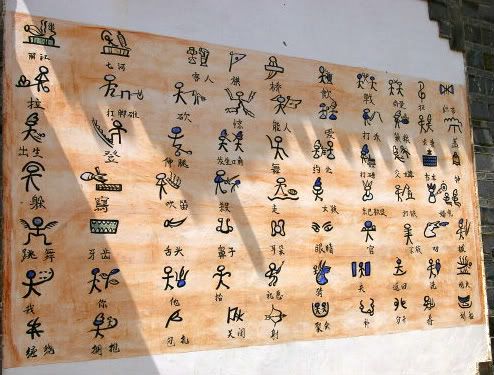 And for all I know, this old man could be the descendant of Chieftain Mu! 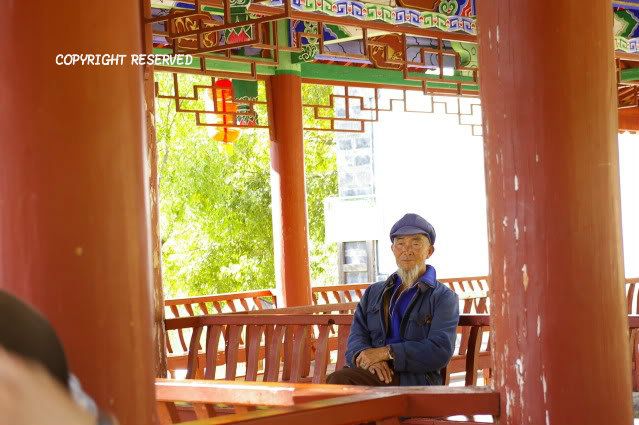 |
|
|
|
Post by chefying on Aug 2, 2014 6:00:05 GMT
For those who are interested in the Naxi writing, here is an enlargement of parts of the Naxi writing photo. Some are quite easy to decipher, but most are a pain to draw - I am hopeless at drawing. 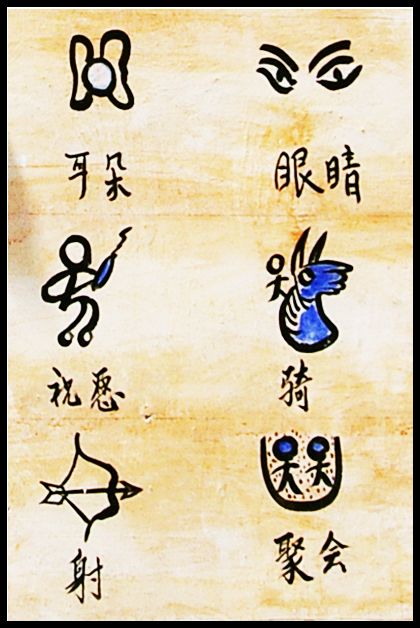 ears, eyes prayer, riding shoot, meeting/gathering 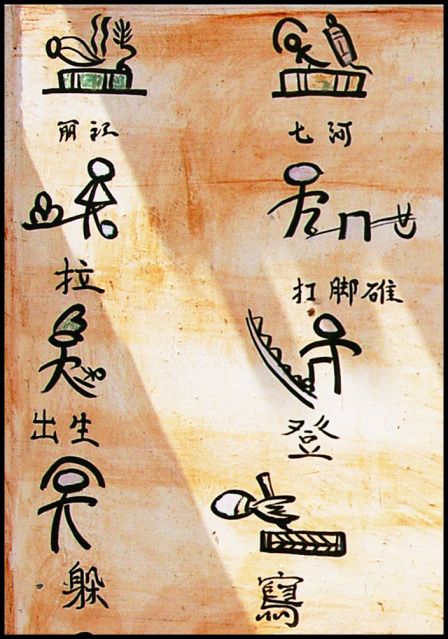 I cannot quite understand top left (Lijiang) and top right (Seven River) but in the second row, to pull and pound (with foot pestle) is straight forward enough. Third row left is giving birth, and right is ascend - these are easy enough to decipher. Bottom row left is to hide, and bottom left is writing - it is not so difficult once you know what it is - but if the Chinese characters were not there to help, it may not be that easy to figure out their meanings. |
|
|
|
Post by chefying on Aug 2, 2014 6:03:05 GMT
Some more Naxi writings... 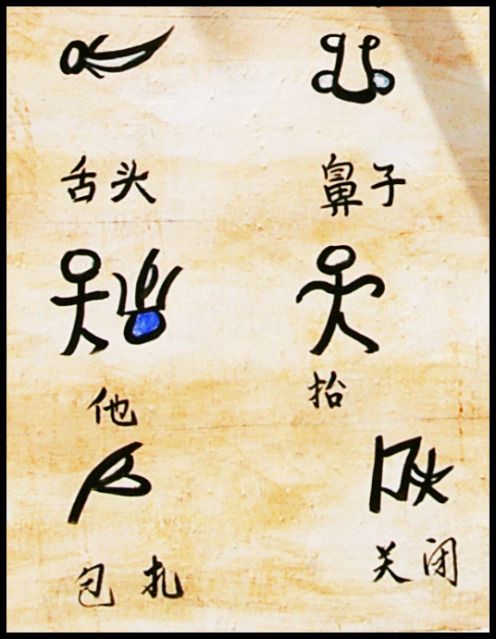 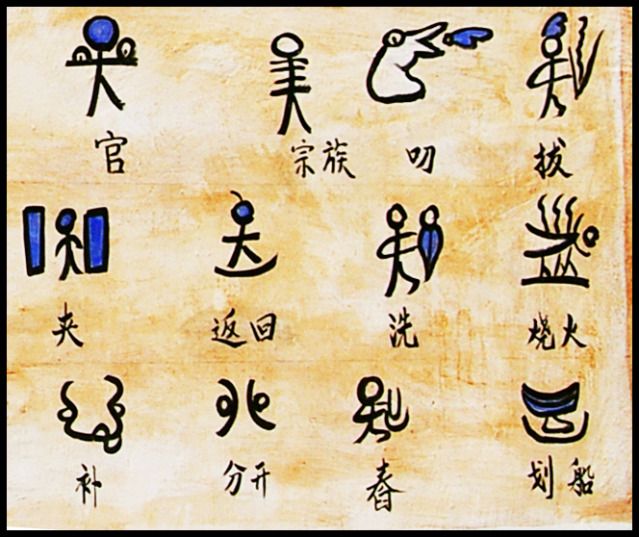 |
|
|
|
Post by Admin on Aug 13, 2014 16:44:23 GMT
wow!! those Naxi writing indeed is a pictograph. so awesome. Again, thanks a lot Chef! Anyway, Chef, there's a city in Henan, it's called Guo Liang Cun, it's also an ancient city. Nowadays this city is turned into a shooting film village due to many films and series shoot on that village. I went there in 2009, but the camera was stolen   no pictures  |
|
|
|
Post by chefying on Aug 23, 2014 16:02:11 GMT
wow!! those Naxi writing indeed is a pictograph. so awesome. Again, thanks a lot Chef! Anyway, Chef, there's a city in Henan, it's called Guo Liang Cun, it's also an ancient city. Nowadays this city is turned into a shooting film village due to many films and series shoot on that village. I went there in 2009, but the camera was stolen   no pictures  I do hate it when the camera got stolen. It happened to me once, and once only - that's too often for my liking. It is not so much the lost camera that I pined, I mourned for my lost photos! When my camera was stolen, it held a roll of film (yes, film - it was a long time ago) that had my shots taken in Marrakesh, Morocco. I have never been back there since. |
|
|
|
Post by chefying on Aug 23, 2014 16:10:48 GMT
Let's have a bit of a reality check here. These photos were taken in a park in Dali, China in year 2009. Yes, the same Dali as in the Duan Dynasty in Demi Gods and Semi Demons Tian Long Ba Bu. Imagine a park this pretty... 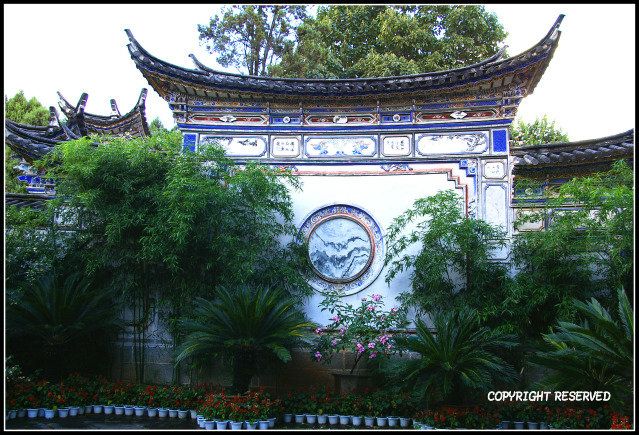 ... with such traditional architecture... 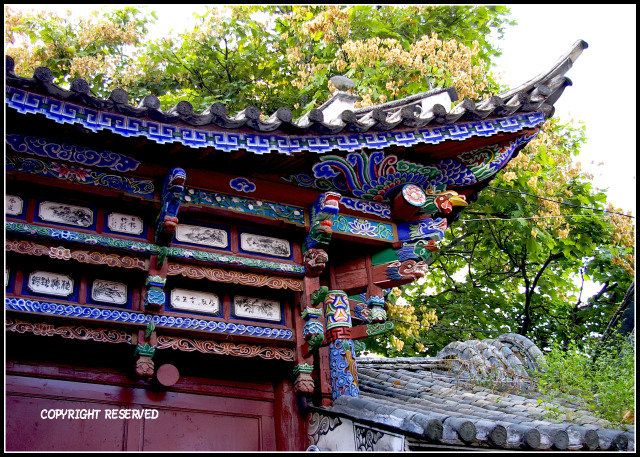 ... gazing out of one such Moon Gate, sipping tea and munching of light Chinese snacks such as melon seeds...  ... and, with no qualms, leaving behind a mess like this! 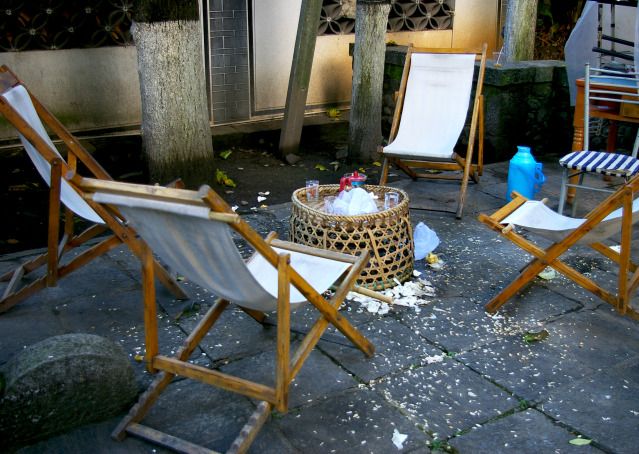 I sincerely hope the behaviour of the local Chinese have improved since I was there. I can't help but wonder if this was how they behaved in the days of yore? |
|
|
|
Post by chefying on Aug 23, 2014 16:26:06 GMT
Yunnan cannot be mentioned without evoking Wu Sangui. At the age of 19, he was a wu zhuangyuan 武状元 and by 27, he was a General. Wu Sangui 吳三桂 (born in 1612) was the Ming Dynasty General who opened the gate at the ShanHai Guan (Pass) 山海关 part of the Great Wall of China, allowing the Manchurians to enter Central China and subsequently establish the Qing Dynasty. This happened in 1644 when Wu Sangui was 32 years old. I base the following on what I picked up from Wikipedia and the internet – I am not a historian. In February 1644, the peasant rebel Li ZiCheng 李自成 proclaimed himself King in Xi’an 西安, and started to overthrow the Ming Dynasty. In March the Manchurians proposed to Li ZiCheng to join forces to overthrow the Ming Dynasty. In early April, the Ming Emperor Chongzhen 崇祯 ordered Wu Sangui and his troops to ShanHai Pass to protect China from the possible Manchurian invasion. By the end of April, Li ZiCheng and his army managed to enter Beijing, and Ming Emperor Chongzheng committed suicide. Wu Sangui was still a Ming General. Hearing the Ming Emperor’s death, Wu Sangui was marching to Beijing when he heard his family and his concubine, Chen YuanYuan 陈圆圆 was held captive by Li ZiCheng. So Wu Sangui returned to his ShanHai Pass stronghold. In May, Li ZiCheng order his generals to attack Wu Sangui. Twice Wu Sangui defeated Li Zicheng’s generals. In the meantime, the peasant king Li ZiCheng brutalized the Ming Court Officials – most probably because Li ZiCheng was paranoid and he did not know how to run a country. With his army twice defeated by Wu Sangui, Li ZiCheng marched to ShanHai Pass with his huge rebel army to confront Wu Sangui in late May. Aware of the approach of Li ZiCheng’s army, Wu Sangui turned to the Manchurians for help. The gates of the ShanHai Pass were opened and the Manchurians entered China. Li ZiCheng was defeated and on 31 May he re-entered Beijing with his troops and looted Beijing. On 4 June, Li ZiCheng set the Forbidden City on fire and fled back to Xi’an. On 5 June, the Manchurian army entered Beijing. The 6 year old Emperor Shun Zhi 顺治 arrived in Beijing in October the same year, and was subsequently enthroned, and so commenced the rule of the Qing 清 Dynasty over China. So in about 9 months in 1644, China had a peasant rebel that forced the suicide of the Ming Emperor, who was then defeated and a Manchurian Emperor was enthroned. (It is therefore incorrect to say that the Manchurian Qing's overthrew the Chinese Ming's.) Wu Sangui was rewarded with the title Pingxi Wang 平西王 – Pacifier of the East and 15 years later, in 1659 Wu Sangui was charged with eliminating the last of the Ming resistance in the southwest. To this end, he was given civil and military control of the southwestern province of Yunnan. By 1673, Wu Sangui was 61 years old and had ruled Yunnan for 14 years. In between, Emperor Shun Zhi died and Kang Xi became emperor. This was the period in which Jin Yong set the story Deer and Cauldron Lu Ding Ji 鹿鼎记. In 1673, Emperor Kang Xi 康熙, always wary of Wu Gangui and two other Han Chinese governors (one of Guangdong 广东 and one of Fujian 福建) recalled them to Beijing – in effect stripping them of their powers and influence. The three rebelled against the Qing. This struggle lasted 8 years. In 1678, aged 66, Wu Sangui proclaimed himself Emperor but died in October the same year. Wu Sangui’s grandson continued to struggle, but was defeated by Kang Xi in December 1681. Emperor Kang Xi had Wu Sangui’s corpse scattered across the provinces of China. The Golden Temple in Kunming, Yunnan, built by Wu Sangui, has a section recording the events surrounding Wu Sangui. This was their this write-up on Wu Sangui and his beloved concubine, Chen YuanYuan 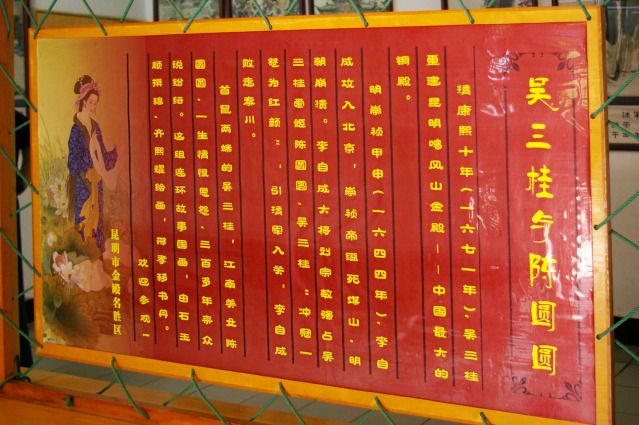 This painting depicts Wu Sangui being reluctant to leave for ShanHai pass, preferring the company of Chen YuanYuan. 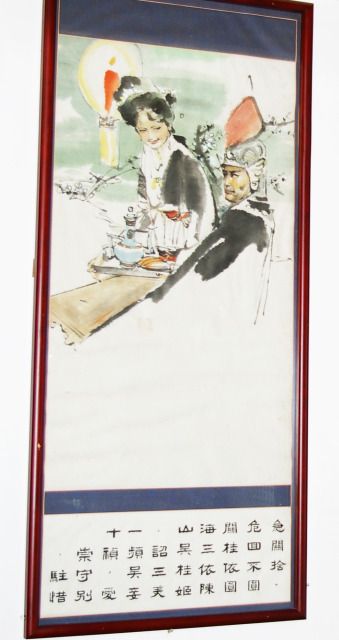 |
|